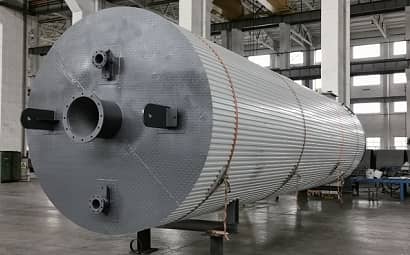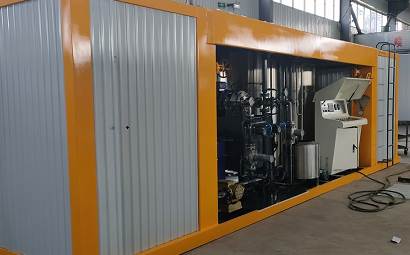Do you know the application of synchronous chip sealer in road construction?
We know that the base layer of bitumen pavement is divided into semi-rigid and rigid. Since the base layer and the surface layer are materials of different properties, good bonding and continuous strength between the two are the key to the requirements of this type of pavement. In addition, when the bitumen pavement seeps water, most of the water will concentrate at the joint between the surface and the base layer, causing damage to the bitumen pavement such as grouting, loosening, and potholes. Therefore, adding a lower seal layer on the semi-rigid or rigid base will play a vital role in enhancing the strength, stability and waterproof ability of the pavement structural layer. We know that the more commonly used technology is to adopt the technology of
synchronous chip sealer vehicle.
The role of the lower seal layer of the synchronous chip sealer vehicle
1. Interlayer connection
There are obvious differences between bitumen pavement and semi-rigid or rigid base in terms of structure, composition materials, construction technology and time. Objectively, a sliding surface is formed between the surface layer and the base layer. After adding the lower seal layer, the surface layer and the base layer can be effectively integrated.
2. Transfer load
The bitumen surface layer and the semi-rigid or rigid base layer play different roles in the pavement structural system.
The bitumen surface layer mainly plays the role of anti-slip, waterproof, anti-noise, anti-shear slip and crack, and transfers load to the base.
In order to achieve the purpose of load transfer, there must be a strong continuity between the surface layer and the base layer, and this continuity can be realized through the action of the lower sealing layer (adhesive layer, permeable layer).
3. Improve road surface strength
The modulus of resilience of the bitumen surface layer is different from that of the semi-rigid or rigid base layer. When they are combined together under load, the stress diffusion mode of each layer is different, and the deformation is also different. Under the vertical load and lateral impact force of the vehicle, The surface layer will have a displacement tendency relative to the base layer. If the internal friction and adhesion of the surface layer itself and the bending and tensile stress at the bottom of the surface layer cannot resist this displacement stress, the surface layer will have problems such as pushing, rutting, or even loosening and peeling, so an additional force is required to prevent this interlayer movement. After the lower sealing layer is added, the frictional resistance and cohesive force to prevent movement are increased between the layers, which can undertake the bonding and transition tasks between rigidity and flexibility, so that the surface layer, the base layer, the cushion layer and the soil foundation can resist the load together. In order to achieve the purpose of improving the overall strength of the pavement.
4. Waterproof and anti-seepage
In the multi-layered structure of highway bitumen pavement, at least one layer must be I-type densely graded bitumen concrete mixture. But this is not enough, because in addition to design factors, the construction of asphalt concrete is also affected by various factors such as bitumen quality, stone material properties, stone material specifications and proportions, asphalt ratio, mixing and paving equipment, rolling temperature, and rolling time. Impact. Originally, the compactness should be very good and the water permeability is almost zero, but the water permeability is often too high due to the failure of a certain link, thus affecting the anti-seepage ability of the bitumen pavement. It even affects the stability of the bitumen pavement itself, the base and the soil foundation. Therefore, when the bitumen surface is located in a rainy area and the gaps are large and the water seepage is serious, the lower seal layer should be paved under the bitumen surface.
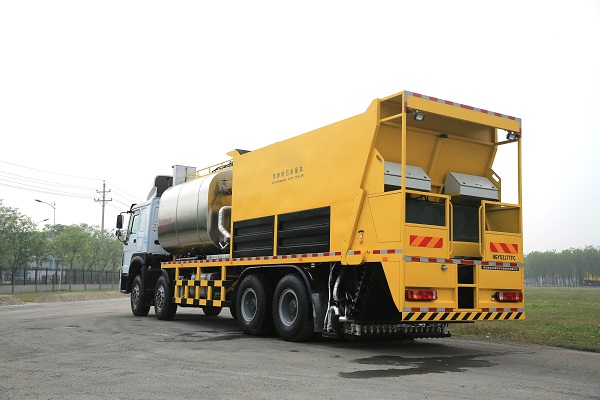
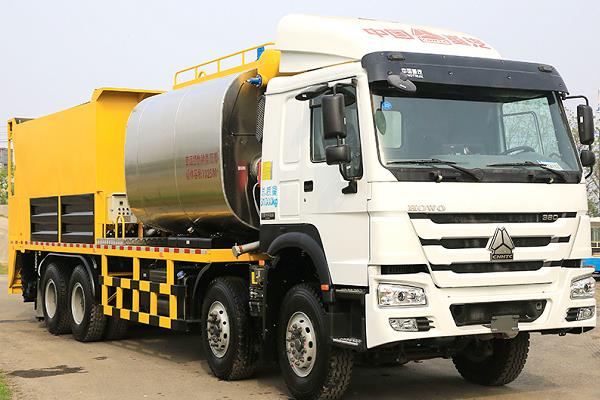 Construction scheme of synchronous sealing vehicle under sealing
Construction scheme of synchronous sealing vehicle under sealing
The working principle of synchronous gravel seal is to use special construction equipment——synchronous chip sealer vehicle to spray high-temperature bitumen and clean and dry uniform stones on the road surface almost at the same time, and the bitumen and stones are completed in a short period of time. Combined, and continuously strengthen the strength under the action of external load.
Synchronous chip sealers can use different types of bitumen binders: Softened pure bitumen, polymer SBS modified bitumen, emulsified bitumen, polymer modified emulsified bitumen, diluted bitumen, etc. At present, the most widely used process in China is to heat ordinary hot bitumen to 140°C or heat SBS modified bitumen to 170°C, use an bitumen spreader to evenly spray the bitumen onto the surface of the rigid or semi-rigid base, and then spread the aggregate evenly. The aggregate is limestone gravel with a particle size of 13.2~19mm. It should be clean, dry, free from weathering and impurities, and have a good particle shape. The amount of crushed stone is between 60% and 70% of the paved area.
The amount of bitumen and aggregate is 1200kg·km-2 and 9m3·km-2 respectively by weight. Construction according to this plan requires high precision in the amount of bitumen spraying and aggregate spreading, so a professional bitumen macadam synchronous sealing vehicle must be used for construction. On the top surface of the cement-stabilized macadam base that has been sprayed through the layer, the amount of spraying is about 1.2~2.0kg·km-2 of hot bitumen or SBS modified bitumen, and then a layer of crushed bitumen with a single particle size is evenly spread on it. The particle size of gravel and gravel should match the particle size of the asphalt concrete paved on the waterproof layer. The spreading area is 60-70% of the full pavement, and then stabilized with a rubber tire roller for 1-2 times to form. The purpose of spreading gravel with a single particle size is to protect the waterproof layer from being damaged by the tires of construction vehicles such as material trucks and the crawler tracks of bitumen paver during construction, and to prevent the modified bitumen from being melted by high temperature climate and hot asphalt mixture. Sticking the wheel will affect the construction.
Theoretically, the crushed stones are not in contact with each other. When the asphalt mixture is paved, the high-temperature mixture will enter the gap between the crushed stones, causing the modified bitumen film to be heated and melted. After rolling and compacting, the white crushed stone becomes The bitumen gravel is embedded in the bottom of the bitumen structural layer to form a whole with it, and an "oil-rich layer" of about 1.5cm is formed at the bottom of the structural layer, which can effectively play the role of a waterproof layer.
Matters needing attention during construction
(1) To form a uniform and equal-thickness bitumen film by spraying in the form of mist, ordinary hot bitumen must be heated to 140°C, and the temperature of SBS modified bitumen must be above 170°C.
(2) The construction temperature of the bitumen seal layer should not be lower than 15°C, and the construction is not allowed in windy, dense fog or rainy days.
(3) The thickness of the bitumen film is different when the height of the nozzle is different (the overlap of the fan-shaped mist sprayed by each nozzle is different), and the thickness of the bitumen film is suitable and uniform by adjusting the height of the nozzle.
(4) The synchronous gravel sealing vehicle should run at a suitable speed and uniform speed. Under this premise, the spreading rate of the stone material and the binder must match.
(5) After the modified bitumen and gravel are sprinkled (scattered), manual repair or patching should be carried out immediately, and the repair is the starting point, end point, longitudinal joint, too thick, too thin or uneven.
(6) Send a special person to hold a bamboo broom to follow the synchronous chip sealing vehicle, and sweep the crushed stones outside the width of the paving (that is, the width of bitumen spreading) into the paving width in time, or add a baffle to prevent the crushed stones Popup Pave Width.
(7) When any material on the synchronous chip sealing vehicle is used up, the safety switches for all material delivery should be turned off immediately, the remaining amount of materials should be checked, and the mixing accuracy should be checked.
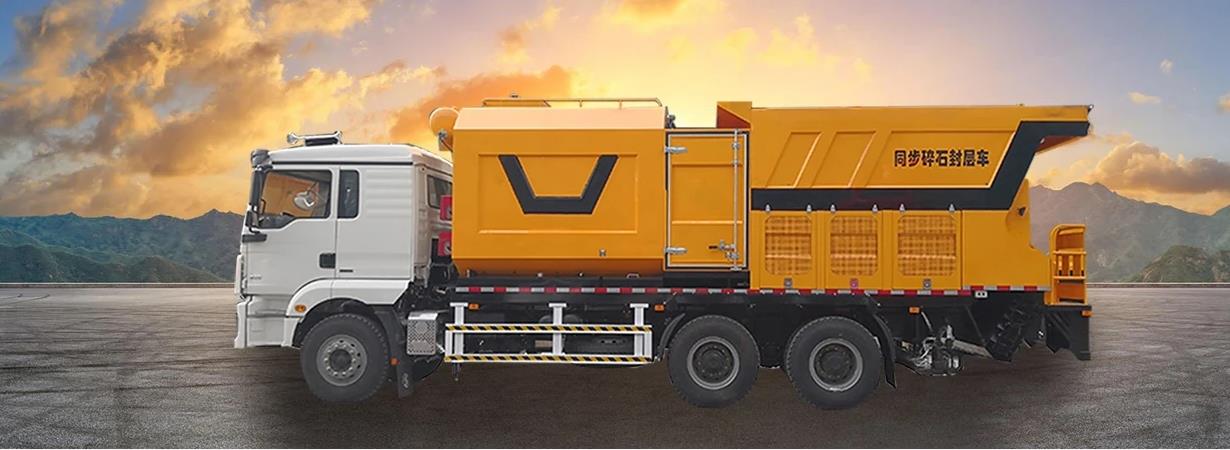 Construction process
Construction process
(1) Rolling. The waterproof layer that has just been sprayed (sprinkled) cannot be rolled immediately, otherwise the high-temperature modified bitumen will adhere to the tires of the rubber-tyred road roller and stick away the gravel. When the temperature of SBS modified bitumen drops to about 100°C, a rubber-tyred road roller is used to stabilize the pressure for one round trip, and the driving speed is 5-8km·h-1, so that the gravel is pressed into the modified bitumen and bonded firmly.
(2) Conservation. After the seal layer is paved, it is strictly forbidden for construction vehicles to brake suddenly and turn around. The road should be closed, and after the construction of the SBS modified bitumen seal layer is closely connected with the construction of the lower layer, the bitumen lower layer should be constructed immediately, and the lower layer can only be opened for traffic after the lower layer is paved. On the surface of the waterproof layer stabilized by rubber-tyred rollers, the bond between gravel and bitumen is very firm, and the ductility (elastic recovery) of the modified bitumen is large, which can effectively delay and reduce the cracks of the base layer on the surface layer by playing the role of a stress-absorbing layer reflective cracks.
(3) On-site quality inspection. Appearance inspection shows that the bitumen spread of the bitumen seal layer should be even without leaking and oil layer is too thick; the bitumen layer and aggregate layer of single-size gravel should be evenly spread without heavy weight or leakage. Sprinkling amount detection is divided into total amount detection and single-point detection; the former controls the overall sprinkling amount of the construction section, weighs the gravel and bitumen, calculates the sprinkling area according to the length and width of the sprinkling section, and then calculates the amount of sprinkling of the construction section. Overall application rate; the latter controls individual point application rate and uniformity.
In addition, the single-point detection adopts the method of placing the plate: that is, use a steel tape to measure the surface area of the square plate (enamel plate), and the accuracy is 0.1cm2, and the mass of the square plate is weighed to an accuracy of 1g; randomly select the measuring point in the normal spraying section , place 3 square plates within the spreading width, but they should avoid the track of the sealing vehicle wheel, the distance between the 3 square plates is 3~5m, and the stake number of the measuring point here is represented by the position of the middle square plate; synchronous chip sealing truck is constructed according to the normal construction speed and spreading method; take away the square plate that has received samples, and sprinkle bitumen and gravel on the blank space in time, weigh the weight of the square plate, bitumen, and gravel, accurate to 1g ; Calculate the mass of bitumen and gravel in the square plate; take out the gravel with tweezers and other tools, soak and dissolve the bitumen in trichlorethylene, dry the gravel and weigh it, and calculate the mass of gravel and bitumen in the square plate; Cloth amount, calculate the average value of 3 parallel experiments.
We know that the test results show that we know that the amount of bitumen sprayed by the
synchronous gravel sealer vehicle is relatively stable because it is not affected by the speed of the vehicle. Sinoroader synchronous sealer truck Our crushed stone spreading amount has strict requirements on the speed of the vehicle, so the driver is required to drive at a constant speed at a certain speed.
 Albanian
Albanian  Russian
Russian  Arabic
Arabic  Amharic
Amharic  Azerbaijani
Azerbaijani  Irish
Irish  Estonian
Estonian  Odia (Oriya)
Odia (Oriya)  Basque
Basque  Belarusian
Belarusian  Bulgarian
Bulgarian  Icelandic
Icelandic  Polish
Polish  Bosnian
Bosnian  Persian
Persian  Afrikaans
Afrikaans  Tatar
Tatar  Danish
Danish  German
German  French
French  Filipino
Filipino  Finnish
Finnish  Frisian
Frisian  Khmer
Khmer  Georgian
Georgian  Gujarati
Gujarati  Kazakh
Kazakh  Haitian Creole
Haitian Creole  Korean
Korean  Hausa
Hausa  Dutch
Dutch  Kyrgyz
Kyrgyz  Galician
Galician  Catalan
Catalan  Czech
Czech  Kannada
Kannada  Corsican
Corsican  Croatian
Croatian  Kurdish (Kurmanji)
Kurdish (Kurmanji)  Latin
Latin  Latvian
Latvian  Lao
Lao  Lithuanian
Lithuanian  Luxembourgish
Luxembourgish  Kinyarwanda
Kinyarwanda  Romanian
Romanian  Malagasy
Malagasy  Maltese
Maltese  Marathi
Marathi  Malayalam
Malayalam  Malay
Malay  Macedonian
Macedonian  Maori
Maori  Mongolian
Mongolian  Bengali
Bengali  Myanmar (Burmese)
Myanmar (Burmese)  Hmong
Hmong  Xhosa
Xhosa  Zulu
Zulu  Nepali
Nepali  Norwegian
Norwegian  Punjabi
Punjabi  Portuguese
Portuguese  Pashto
Pashto  Chichewa
Chichewa  Japanese
Japanese  Swedish
Swedish  Samoan
Samoan  Serbian
Serbian  Sesotho
Sesotho  Sinhala
Sinhala  Esperanto
Esperanto  Slovak
Slovak  Slovenian
Slovenian  Swahili
Swahili  Scots Gaelic
Scots Gaelic  Cebuano
Cebuano  Somali
Somali  Tajik
Tajik  Telugu
Telugu  Tamil
Tamil  Thai
Thai  Turkish
Turkish  Turkmen
Turkmen  Welsh
Welsh  Uyghur
Uyghur  Urdu
Urdu  Ukrainian
Ukrainian  Uzbek
Uzbek  Spanish
Spanish  Hebrew
Hebrew  Greek
Greek  Hawaiian
Hawaiian  Sindhi
Sindhi  Hungarian
Hungarian  Shona
Shona  Armenian
Armenian  Igbo
Igbo  Italian
Italian  Yiddish
Yiddish  Hindi
Hindi  Sundanese
Sundanese  Indonesian
Indonesian  Javanese
Javanese  Yoruba
Yoruba  Vietnamese
Vietnamese  Hebrew
Hebrew  Chinese (Simplified)
Chinese (Simplified)







